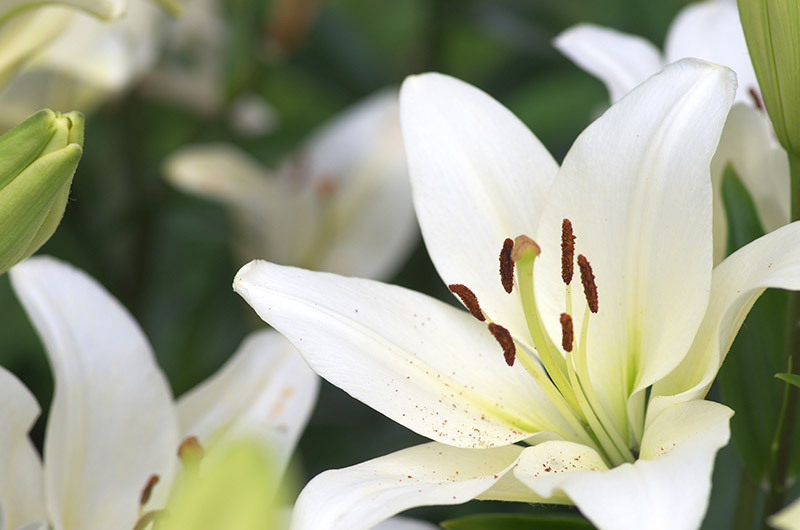8 Eye-Opening Facts About Sunflowers That Will Amaze You
Posted on 14/08/2025
8 Eye-Opening Facts About Sunflowers That Will Amaze You
Sunflowers are far more than just cheerful, bright blooms decorating gardens or fields--they are truly captivating plants with fascinating stories. Their golden faces look toward the sun, and their presence radiates warmth and positivity. But did you know sunflowers have a remarkable history, extraordinary biology, and play important roles in ecology and even space science? Dive in as we uncover eight surprising facts about sunflowers that will leave you amazed and wanting to know more!
1. Sunflowers Track the Sun: The Science of Heliotropism
One of the most astonishing facts about sunflowers is their famous ability to follow the sun's journey across the sky. This process is called heliotropism. Young sunflower buds exhibit this unique behavior: at dawn, they face east, and as the sun moves, they gently turn to follow it westward.
- Mature sunflowers usually face east, optimizing for early-morning sun exposure, which helps to attract pollinators.
- This movement is directed by growth hormones that are stimulated by light, causing one side of the stem to elongate more than the other.
- Not only is sun tracking spectacular to watch, it maximizes photosynthesis and ensures the best possible conditions for growth.
Fun Fact:
Once sunflowers mature, their stems become rigid and their heads almost always settle facing east. This position helps them stay warm, which makes them more inviting to bees and other pollinators.

2. The Sunflower's Origin: From Ancient Americas to Modern Gardens
Sunflowers (Helianthus annuus) originated in North America thousands of years ago. Native American tribes domesticated sunflowers as far back as 3000 BCE, appreciating their nutritional and medicinal properties.
- Sunflowers were used for flour, oil, and dyes, and their seeds were prized for their rich protein and healthy fats.
- Spanish conquistadors brought sunflowers to Europe in the 16th century, where their popularity quickly grew.
- Today, they are grown worldwide, from the temperate fields of Russia to gardens in the southern United States and beyond.
Did You Know?
Sunflowers have become symbols of hope and peace in many different cultures, including as the national flower of Ukraine.
3. Sunflowers Can Grow to Staggering Heights
When you think of a sunflower, you probably imagine a tall, sturdy stem and a big, bright bloom. But exactly how tall can sunflowers grow? Prepare to be amazed!
- The world record for the tallest sunflower stands at a whopping 30 feet 1 inch (9.17 meters), grown by Hans-Peter Schiffer in Germany, as documented by the Guinness World Records.
- Most common varieties will easily reach between 6 and 10 feet, but with the right conditions and care, giant varieties can tower above your rooftop!
Watching a sunflower shoot up sky-high is truly a spectacle in the plant world, making it a favorite for gardeners everywhere.
4. Sunflower Seeds: A Nutritional Powerhouse and Delicious Snack
Sunflower seeds are loved across the globe as a healthy and versatile snack. But did you know these seeds pack a powerhouse of nutrition?
- Sunflower seeds are loaded with vitamin E, an antioxidant crucial for heart health.
- They are rich in B vitamins, magnesium, selenium, protein, and healthy unsaturated fats.
- Enjoyed roasted, salted, or raw, sunflower seeds are also used in breads, cereals, and even as a base for sunflower seed butter--an excellent peanut butter alternative.
- Sunflower oil, derived from the seeds, is prized for its light flavor and high smoke point, making it perfect for cooking.
Health Tip:
Adding sunflower seeds to your daily diet can help lower blood pressure, reduce inflammation, and support healthy skin.
5. Sunflowers Are Mathematical Marvels: The Fibonacci Connection
Next time you gaze at the center of a sunflower head, take a closer look at the pattern of the seeds. You'll notice mesmerizing spirals that reflect a beautiful mathematical principle: the Fibonacci sequence.
- The arrangement of sunflower seeds follows the Fibonacci sequence, where each number is the sum of the two preceding numbers (1, 1, 2, 3, 5, 8, 13, 21, ...).
- This spiral pattern not only looks stunning but is also the most efficient way for the plant to pack as many seeds as possible into the flower head.
- The angle between seeds, roughly 137.5 degrees, is often referred to as the "golden angle," resulting in a naturally optimized packing structure.
Why Does This Matter?
Mathematicians and botanists have long been fascinated by the sunflower because it demonstrates how mathematics is present in nature to maximize growth and life.
6. Sunflowers Can Remove Toxins from Soil: Nature's Cleanup Crew
Among the most surprising facts about sunflowers is their ability to clean up contaminated environments, a process known as phytoremediation.
- Sunflowers have been planted at key environmental disaster sites, including Chernobyl and Fukushima, to extract toxic elements like lead, uranium, and radioactive cesium from the soil.
- Their roots absorb these heavy metals, helping to restore habitat and reduce ecological hazards.
- This remarkable trait is sparking research into the use of sunflowers for future land reclamation projects and soil health initiatives.
Environmental Impact:
Planting sunflowers in contaminated areas is a natural, visually beautiful way to promote environmental healing and demonstrate sustainable land management.
7. Sunflowers Have Been to Space!
While everyone admires sunflowers on Earth, did you know that sunflowers have also traveled to space? That's right! NASA astronauts have taken sunflower seeds--and even grown the plants--onboard the International Space Station (ISS).
- In 2012, astronaut Don Pettit grew a sunflower as part of an experiment to understand how plants grow in zero gravity environments.
- The experiment helped scientists study plant circadian rhythms, seed development, and growth patterns in microgravity.
- Astronaut Pettit even kept a sunflower "gardening diary" that inspired earth-bound students and fellow scientists alike!
Out-of-this-World Growth:
Sunflowers' resilience and adaptability mean they could one day be important companions for future explorers in space!

8. More Than Just Yellow: Sunflower Varieties Galore
When you imagine a sunflower, a classic big yellow bloom probably comes to mind. But are all sunflowers yellow? Absolutely not! There are over 70 species and countless cultivated varieties of sunflowers, boasting a kaleidoscope of colors, shapes, and sizes.
- Some sunflowers flaunt bold shades of red, burgundy, orange, or even purple.
- Dwarf varieties can be as small as a foot tall and are perfect for containers or borders.
- Giant sunflowers, with blooms measuring up to 24 inches in diameter, stand tall with drama and flair.
- "Teddy Bear" sunflowers feature puffy, double blooms, while "Moulin Rouge" sports velvety deep red flowers.
In the Garden:
Growing diverse sunflower varieties adds vibrant color and texture to your space, supports pollinators, and provides personal satisfaction.
Conclusion: Sunflowers--A Symbol of Joy, Science, and Sustainability
The next time you catch sight of a sunflower, remember that this iconic plant is packed with secrets, from its sun-chasing dance to its ecological and nutritional superpowers. Sunflowers enrich our landscapes, inspire art and mathematics, clean our planet, and even contribute to our understanding of life beyond Earth.
- Whether you marvel at their striking beauty, harvest their nutritious seeds, or appreciate their role in environmental science, sunflowers deserve a place in your heart--and perhaps your garden.
- Sunflowers encourage us to grow tall, seek light, and spread seeds of hope everywhere we go.
Want to experience the wonder of sunflowers firsthand? Plant a few seeds this season and watch as nature's golden marvel unfolds before your eyes!
Latest Posts
Grow Stunning Hydrangeas with Ease
Ensure Your Poinsettias Bloom Beautifully All Season
Must-Have Flowers to Celebrate Birthdays in Style





